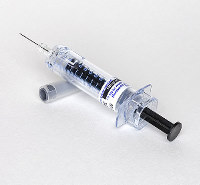Trauma in the pregnant patient is scary, but thankfully not very common. About 1 in 15 pregnant women sustain some type of significant injury. About half are from car crashes (most commonly if unrestrained), and 25% each are from assault (frequently domestic) and falls. Unfortunately, trauma is the leading cause of non-obstetric fetal death.
What makes this type of trauma problematic is two-fold, literally. First, you have two patients. And second, neither one has “normal” physiology. The mother has made numerous adaptations to accommodate the pregnancy, and the fetus is essentially a small parasite, totally dependent on her.
Let’s look at the impact of some of the more important maternal adaptations:
- Total blood volume increases by about one liter. This would seem to be good, but since it is mainly dilutional with no real increase in total RBCs, and this is coupled with a lower mean blood pressure. Trauma professionals can easily underestimate blood loss.
- Going into the third trimester, the uterus can compress the IVC when the mother is lying supine. but it is quite frequently forgotten. One of the first maneuvers when you suspect an advanced pregnancy is to bump the patient to her left. Do this even if the blood pressure is normal.
- The pelvic veins are huge. Disruption from pelvic fractures or penetrating injury can lead to massive bleeding.
- The stomach is probably full, and under pressure from below. This increases aspiration risk in women who have decreased mental status or need intubation.
And don’t forget the fetus:
- The fetal/placental/uterine complex is one large, non-compressible unit with multiple shear planes within it. Blunt force will stress those planes, and may result in disruption of the uterus from pelvic veins (massive bleeding), or separation of the placenta from the uterus (abruption).
- The fetus is totally dependent on the mother for survival, but the placenta will protect the mother first, shutting down fetal circulation if she becomes hypotensive or hypoxic.
- The baby was designed to come into this world at full term. We have developed the technology to sustain life in smaller and more premature babies. The magic number of weeks keeps slowly decreasing, but preemie survival without complications is a challenge.
Tomorrow, we’ll move on and get to the fun stuff, predicting outcome after trauma in pregnancy.


